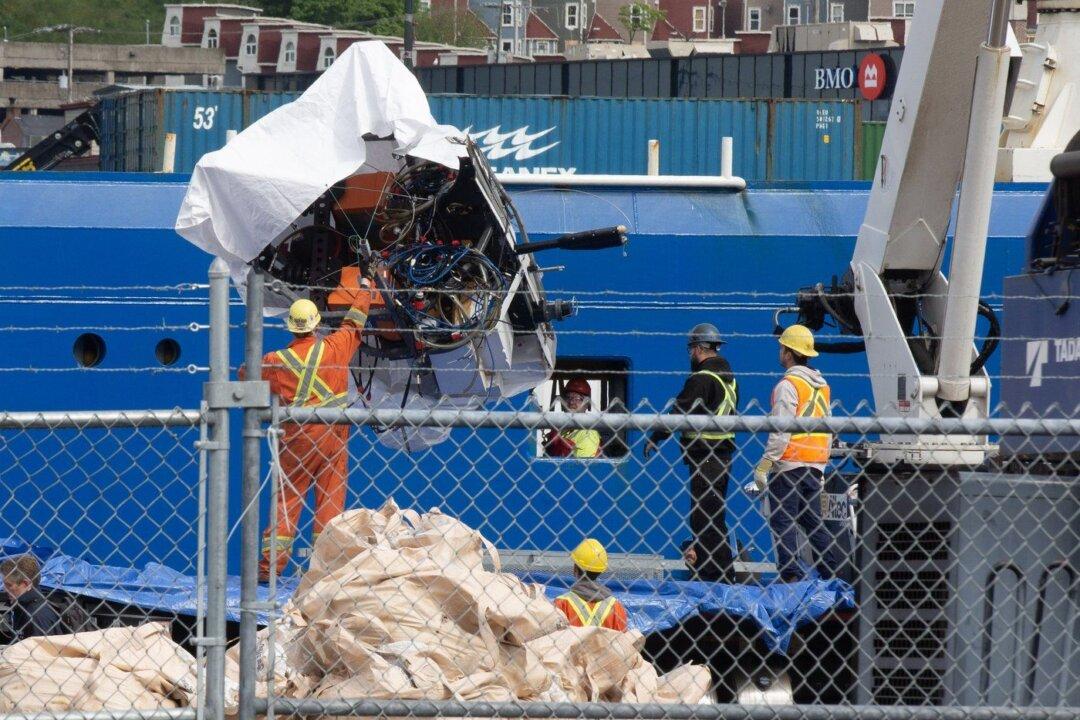New photos and video footage show the debris from the OceanGate Titan submersible vehicle after it was hauled from the Atlantic Ocean, following what officials say was a catastrophic implosion that killed all five people on board.
The footage shows pieces of the craft being taken to a vessel in St. John’s Harbor in Canada’s Newfoundland Province on the morning of June 28. Some of the debris fragments and pieces showed signs of significant damage.





